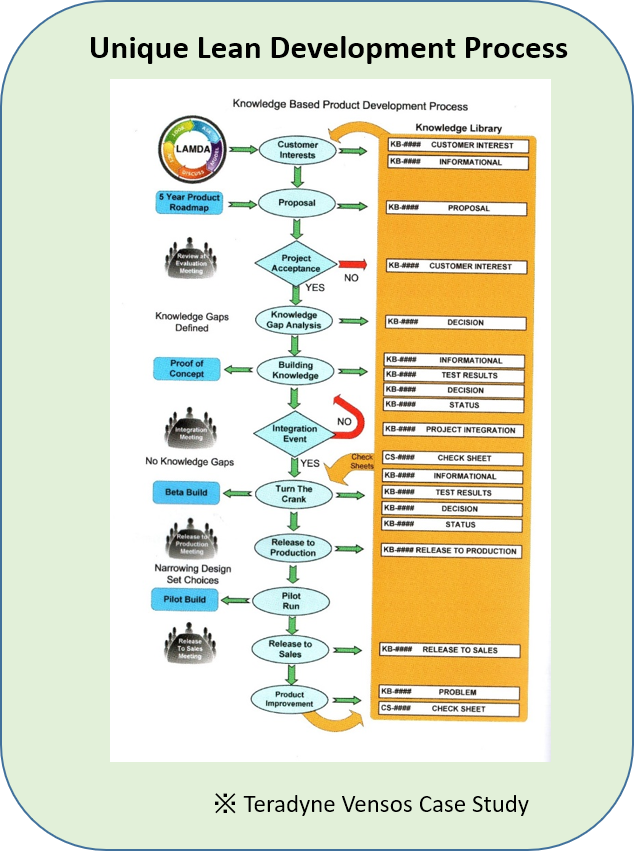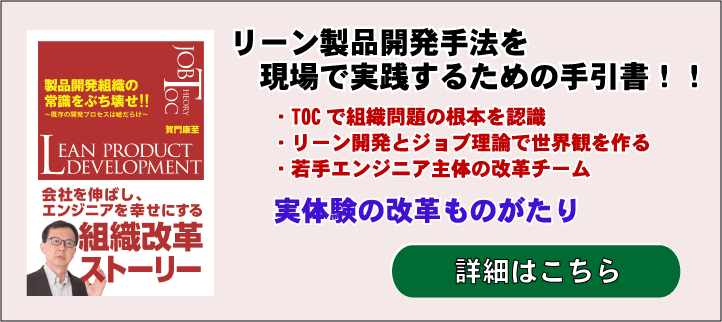

Is your technical report being used effectively for product development?
I don’t have time to write reports, so I always put them off. Only my immediate supervisor reads the content of the report, but I feel that it is often left unwritten without being widely shared within the organization. I have somehow noticed a tendency to neglect how to write and operate reports, but it seems to be buried under other important issues
It seems that the important role of reports is sometimes neglected because we are busy with problem solving, dealing with market complaints, and other miscellaneous tasks other than the important work of development actions and ideas.
By thinking of technical reports as a tool for storing knowledge assets within the organization, and by changing the way we think about reports, we can greatly improve development efficiency.
Let’s learn from Toyota’s A3 report culture about the development methods and processes that bring together the company’s knowledge and work on organizational reform.
Contents of this article
- Why quality is required by the purpose of a technical report
- Three points to improve the quality of your report
- A report that people want to read, not a report about what you want to write
- Titles and headings that let the reader know that the report is for him or her
- Write only the necessary content in the necessary order as a series of stories to be told to the reader
- Reports are a communication tool between supervisors and subordinates
- Examples of organizational reform through improved report writing
Why quality is required by the purpose of a technical report

I believe that the work of an engineer ultimately consists of three things
- Drawing (the act of development)
- Producing ideas (patents)
- Writing reports
I am sure that there are many companies that have a good balance of all three, but I feel that many companies that are struggling with regular schedule delays and difficulty in producing hit products have an imbalance of these three.
Specifically, in the development process, quality problems, market complaints, and miscellaneous tasks caused by the involvement of many people take up a lot of time, and the priority of work related to idea consideration and reports seems to be lowered.
In this context, the significance of writing and using reports seems to have been lost.
Since there are different types of reports, each with different purposes, I will summarize the types of reports and their purposes.
- Quality Problem Resolution Report
- Make the existence of quality problems known
- Share the process of solving quality problems to prevent recurrence
- Share the approach to solve the problem and learn the solution know-how systematically
- Progress and Result Report of Work Requested by Supervisor
- Confirm promises made to superiors and obtain approval for results
- Progress and result reports for organizational goals
- Report to top management on the status of the organization’s overall activities and obtain their approval
- Identify the organization’s achievements and challenges for the next step
- Proposals for budget acquisition and resource acquisition
- Obtain approval from the organization for activities that are a leap forward from the established path
- Report on new findings, acquired knowledge, and know-how
- Improve efficiency and vitality of organizational activities by sharing
- Avoid duplication of work within the organization
For 2, 3, and 4, the reporting party and the recipient are clear, and the report is completed between the two parties, so the completeness and quality of the report can be discussed directly between the two parties.
The problems are 1 and 5.
The activities related to problem solving (1) are probably more frequent, and it is not only important to identify the cause of the problem, find a solution, and put the problem to rest, but it is also necessary to report the progress of the problem to the relevant people in some cases.
The important thing is to bring the problem under control as soon as possible, and the report is considered to be an afterthought, and both the person reporting and the person receiving the report sometimes neglect the quality of the report itself. In fact, the results of problem solving and the approach taken are important information that can be used as a reference for many others and must be utilized within the organization.
As for 5, the management of the organization will receive and approve the report, but essentially, it is the unspecified number of people in the organization who will utilize this kind of report.
Both 1 and 5 are to be utilized to an extent that is not expected by the reporter, which means that the quality of the report should be such that it can be utilized over a long period of time and by a wide audience, since it is not a one-time thing.
In other words, depending on the purpose of the report, it should be written in such a way that it can be widely used as an internal knowledge asset.
If the report is widely read and utilized, it will help the organization to become more active in the following ways.
- Useful internal technology is reused
- Stimulate internal technical communication through the report
- The same mistakes are not repeated
What do you think?
It seems that organizational activities can be transformed by improving the way reports are written, without neglecting them.
Three points to improve the quality of your report

This section explains how to improve the quality of reports so that useful techniques can be spread through reports within the organization and organizational activities can be revitalized.
The three key points are as follows
- A report that people want to read, not a report that says what you want it to say
- Titles and headings that let the reader know that the report is for him or her
- Write only the necessary content in the necessary order, as a series of stories to tell the reader
A report that people want to read, not a report that says what you want it to say
In order for a report to be reused in an organization, it must be read by many people.
It becomes valuable only when it is read and used by many people.
This means that the report must be chosen and read by the readers, and it must be useful to them.
As for the types and purposes of reports 2, 3, and 4, as long as the reporter and the recipient are in agreement, the reporter can write whatever he or she wants.
Rather, they should write what they really want to write in order to actively convey their opinions and thoughts to their superiors and the people they are reporting to.
However, with regard to the types and purposes 1 and 5 of the report, we must think about making the report useful to as many people as possible, and not just now, but in the future.
It is important that the starting point is not what you want to write, but a report that will be read, in other words, a report that will be useful to the customer with the idea of internal marketing with the reader (the customer) in mind.
In other words, the starting point should be the desire to write a report that is useful to customers, with the idea of internal marketing with the reader (the customer) in mind. What the report conveys to the reader should be of value to the company.
In order to increase the value, the scope of availability needs to be expanded.
A technology or know-how that can be used in multiple projects is more valuable than one that can only be used in a specific project.
The requirements for a report that most people want are as follows
- Technology and know-how that can be used not only in the present but also in the future
- Technology and know-how that can be used not only in one project but in multiple projects
- Technology and know-how that can be used to solve the reader’s problems
Titles and headings that let the reader know that the report is for them
Once you are aware that the report is for the reader, it is important to convey the value of the report to the target audience.
Not everyone reads every report from cover to cover.
When they see the title or a quick glance at the report, they need to know that this is a report worth reading
To do this, the title or a prominent part of the report must make the reader know what you want to say.
The title is easy to understand.
Now you need to attract the reader with the headline and the purpose and background at the beginning.
Either in the title, the headline, or the “Background/Purpose” section at the beginning, you should include the following items.
- Words that identify people who are in trouble or who will be in trouble in the future
- Some patterns of trouble or troubling situations
- What happened or will happen to the trouble
Write only the necessary contents in the necessary order as a series of stories to be conveyed to the reader
It is often said that the beginning, middle, and end of a report are important.
If what the writer wants to say is written like a story, without waste and without stagnation, the contents can be understood easily.
If you can’t read the story, the report contains a lot of unnecessary information.
In some cases, the story is interrupted for the writer’s convenience, such as when the writer wants to show off his or her achievements, or when the writer wants to include the results of an experiment he or she has conducted.
In other cases, the writer has a lot to say and wants to leave out as much as possible, which can dilute the important content.
It is important to narrow down the content of your writing.
I think the best way to do this is to think of a story that conveys what you want to say most and helps solve the reader’s problems, and then make it as simple as possible according to that story.
Try to write in such a way that the reader can read the headings (table of contents) in order and understand the grid of the report by itself.
Follow the headings and check with your supervisor that the logic of A is connected to B, B to C, C to D….
At this point, you should ask yourself, “Why is this so? Also, if A is true, why can’t B be true, and if so, why can’t E be true? In other words, check the logic of the flow of the report.
In other words, check that there is nothing wrong with the logic of the flow of the report.
Finally, if you can summarize the entire report and express in a simple sentence that this is what it all comes down to, I think you can say that the report is one that will be understood by the reader.
Reports are a communication tool between supervisors and subordinates
I believe that the quality of a report should be improved because it should be communicated well to the reader, and it should add value to the company by being read.
A quality report should be created by a pair of supervisors and subordinates, and in the process of creating it, the supervisor and subordinate can have a deep discussion.
The supervisor does not give answers to the subordinate, but only hints.
The subordinate may be dissatisfied with his or her supervisor’s point of view for a while, but the subordinate will think about it over and over again and think deeply, and as a result, he or she will learn and grow.
The act of trying to improve the quality of reports is a powerful communication tool and also a subordinate development tool from the supervisor’s point of view.
Moreover, it can be a useful tool for supervisors to develop themselves.
In companies that value reports, technical communication between supervisors and subordinates, or within the organization, is revitalized.
I think it is important to think of reports not only in terms of individual achievements, but also in terms of building and developing each report as an organization.
That is how the power of the team is to be brought together.
A case study of organizational reform through improved report writing

In the Toyota method of lean product development, we use A3 paper for reports and operate an A3 report, a style in which everything is written out on a single sheet.
In Lean Product Development, the report is positioned as a tool to protect and utilize the company’s knowledge assets.
The introduction of Lean Product Development will inevitably lead to the need to improve the way reports are written, and organizational reform will be carried out while improving the way reports are written.
At Teradyne Vensos, which took about five years from 2005 to achieve the introduction of the Lean Product Development Methodology, under the leadership of Ron Marsiglio, the president at the time, the company started with the reform of using A3 reports to store and utilize knowledge assets.
In the words of Ron, “If it’s not in the A3 report, it doesn’t exist in this company. In the words of President Ron, “If it’s not in the A3 report, it doesn’t exist in this company,” and he proceeded with the reform by focusing on the A3 report so thoroughly.
In 2010, about five years after the start of the reforms, they completed their own development process that fully utilized the A3 report, and as a result, the company was able to achieve its goals.
- Reduced development time from an average of 16 months to 11 months (30% reduction)
- Improved technician value-added work ratio from 20% to 80
- Annual turnover rate from 15% to 0%
We have achieved the following results.
Of course, the improvement in reporting may not be the only reason, but it has been a major success factor in this major reform.
The figure below is an overview of the development process they have created.

By learning and improving how to write A3 reports, either by top management themselves or by middle managers acting as examples, they improved the quality of reports throughout the company and established rules that closely linked the report database with the development process.
The development process they created is called ”Knowledge Based Product Development” in the sense that they build up knowledge to develop products that customers want.
This is just a natural way of protecting the company’s knowledge throughout the company and using the knowledge to innovate. On the other hand, I think this case shows how useless it is to leave the knowledge that has arrived at each individual in pieces
Raising the quality of reports is a seemingly small theme, but it can never be achieved by thinking that each individual should do his or her best.
It is vital that the entire company works on it, that they are motivated to do so, and that they proceed from the top down.
In the case of Teradyne, I would like to emphasize in particular that the company achieved significant results through top-down reform.。
The basis for Teradyne’s reforms is the Lean product development method practiced by Toyota.
Their knowledge-based development incorporates the set-based development concept of lean product development.
Related article:
What is Toyota’s Lean Product Development?
Understanding Set-Based Development
Product Development Innovation through A3 Reporting Culture
Guidance system for introducing and achieving results from A3 report activities
We have many examples of our support for improving reports.
Regardless of the technical field, we have successfully reformed reports for our clients by going into the field and supporting activities to improve the quality of reports.
If you are interested, please click below to apply for an interview.
We will contact you to set up a meeting, either in person or via Zoom.


